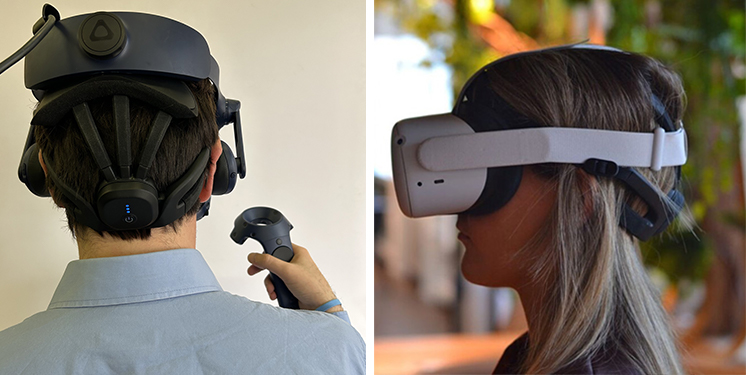Virtual reality is the term used to indicate a simulated reality, built on a computer, where the user can freely move and interact with the environment. BrainSigns uses it to create immersive scenarios and to study the effect on cognitive and emotional states in different conditions.
It is possible to create a simulated, three-dimensional world that seems real to the testers/users’ eyes. There are numerous positive aspects in carrying out research with virtual reality: the advantages are also economic, because through the VR you can test different stimuli without the need to physically realize it, which, most of the time, would require greater economic costs and time.
Access to this digital world is made possible by VR viewers and accessories (not just joypads, but also gloves, shoes and more), which consents specifically to interact and "live" within the virtual reality.
Virtual reality can be integrated with tools such as EEG, HR and GSR to study the people’s neurophysiological and behavioural responses to different stimuli or scenarios.
It is no surprise that the first uses of Virtual Reality in the psychological field concern therapies for psychological disorders such as: phobias, social anxiety or more recently post-stroke rehabilitation. Virtual reality can be used to develop Research scenarios in different fields, such as:
- Interior design - architecture (VR allows to recreate environments of all kinds)
- Psychotherapy
- Medicine (medical exercises, simulations of first aid measures)
- Military (military training with minimized risks)
- Tourism (in order to explore places)
- Art (it gives the opportunity to observe works from all over the world)
- Gaming
- Advertising (advertising in Virtual Reality becomes immersive and a real experience for the user)
- Product testing (VR allows you to create environments where you can place products and test them)









